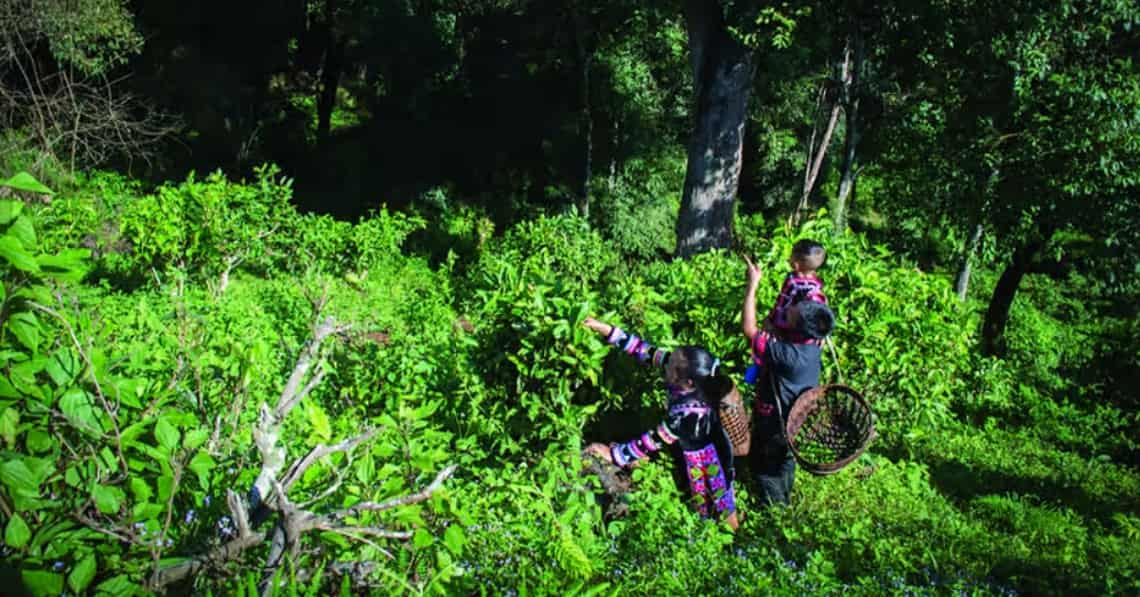According to legend and lore, an emperor in 2737 BCE, who happened to have been a herbalist, was given his preferred refreshment, a cup of boiling water, which had had a tea leaf blown into it from a nearby bush — et voila! Tea was born. According to literature, some kind of leaf was used as infusion as early as the 3rd century BCE, as was noted in a Chinese dictionary at that time. Whatever the source, it has become common belief that it was the Emperors of China who discovered and cultivated the use of tea.
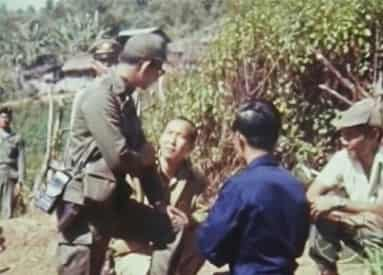
“When I first came to Chiang Mai, I had been in the tea business for over ten years, travelling all over the world buying and researching tea,” Rimdahl explains as we sat in Monsoon Tea, aromas of brewing leaves permeating tantalisingly. “Yet I had no idea that Thailand even had tea.”
“My current business partner Ake, whom I met when I first arrived, took me to Warorot Market and showed me miang. I laughed at these bundles of fermented leaves and told him not to be ridiculous, telling him that of course it wasn’t tea. He then took me to a miang plantation in Doi Saket and I saw these big trees. I knew that in Assam tea trees grew to be huge, but this didn’t look like any tea plantation I knew. However, once I walked up and saw the leaves, well, I couldn’t believe it, north Thailand’s ubiquitous miang was in fact tea!”
Rimdahl is no tea neophyte. He had grown up in his native Sweden developing a great love of tea. In the late 1980s, and working in a travel magazine, his friend Per Sundmalm, who was also a tea enthusiast and Rimdahl’s mentor, opened the first tea shop in Barcelona, Spain. Rimdahl also opened the first shop in Madrid in 1994. East West Company’s tea shops introduced Spain to loose tea and today their empire spans continents, with 63 tea shops in Spain, Brazil, Italy, soon in France.
Rimdahl came to Chiang Mai 14 years ago and liked it so much he eventually decided to base himself here, as he continues to travel the world in search, and research, of tea.
“I wanted to do something in Chiang Mai, but I didn’t want to bring our Spanish brand here as it felt rather ridiculous to export tea from Asia to Hamburg, Europe’s largest tea port, only to brand it and bring it back. I also realised that not many people here were doing flavouring, so I started to investigate that. I began to travel to many miang plantations, meeting tea pickers and growers, visiting tea factories and really getting to know the area. What I have learnt is that the north of Thailand has had a long and rich relationship with tea, but for eating, not for drinking, unto now unknown to the world, even to most Thais.”
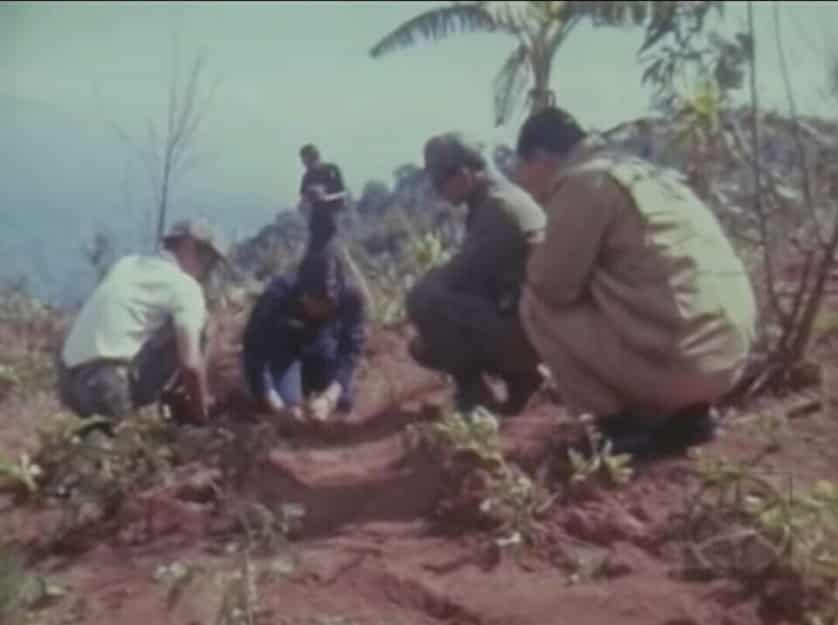
The tea which the world knows is camellia sinensis, which is grown in regimental plantations as seen on PG tips adverts, or as tourist attractions in Sri Lanka’s Kandy, Vietnam’s Pho Tho, or China’s Hangzhou, claimant of the title, Tea Capital of the World. “Before China had this idea to drink tea,” explains Rimdahl, “tea was grown wild in the forests of the Himalayan foothills, from Assam to Burma, through northern Thailand, Laos, Vietnam and up to China’s Yunnan. These were the wolves of tea. They were wild and hybridised naturally in the jungle, with trees growing for hundreds, even thousands of years. There are clear indications that miang may have been used before China began to cultivate tea. There are wild tea trees here between 1200-1500 years old. I have seen an 800 year old tree in a miang plantation, though most of what remains around Chiang Mai are between 60-300 years old. The Chinese carmellia sinensis is like a dog which has been bred and refined over generations tweaked to man-manipulated perfection.”
Rimdahl has visited countless miang plantations in Fang, Mae Taeng, Doi Saket, Lamphun, Mae Hong Son and Chiang Rai. Some still cultivated by locals, others abandoned to the jungle.
“In the old days we had plenty of forests and it was a logical thing to clear a forest for tea plantations, but we can’t afford that anymore. The north of Thailand will become a dessert in 40 years if we have no forests, because our annual monsoon rains rely on them. So as I began to discover these ancient plantations of miang, I really got excited at their potential. Miang, like wolves, grows alongside other plants and trees in the forests. It has more tannin as it hasn’t been treated, it has a natural defence to bugs so there is no need for pesticides, there is also no need for fertiliser as it grows amongst the compost of surrounding trees. Not only that, they don’t suffer during drought, being resilient, they are green year round. Then there are the animals. Tea plantations can be vast and can disrupt animal corridors. In India, for instance, there have been many problems with elephants who have damaged tea plantations, leading to human-elephant conflict. The loss of natural habitat is also very worrying.”
“Of course, logistically they are harder to cultivate, as they are not grown in perfect rows at human height, ready for picking. These can be massive trees grown in primitive plantations absorbed into the forests. What we do is we encourage farmers to cut the underbrush, while leaving all surrounding trees intact for diversification, trim the trees down to a manageable height and instead of picking middle level leaves, which was the preferred leaf to pick for miang consumption, instead to pick the top buds for tea drinking. This is the only way for tea to be sustainable. If farmers can see money in the jungle, they will protect it.”
Miang has been chewed, stewed and brewed for generations. Here in Chiang Mai, it has long been considered medicinal, and even used ceremoniously.
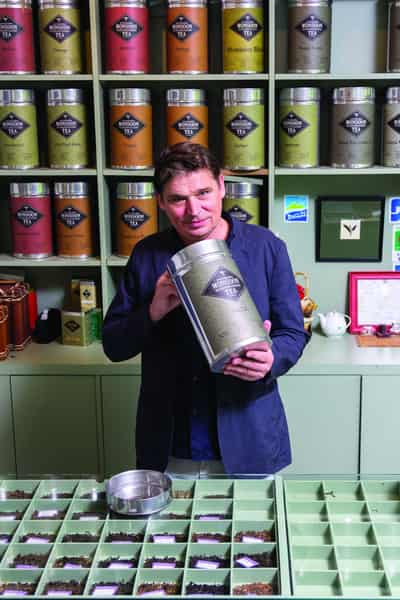
“My grandmother chewed miang leaves every day of her life until she died at 108,” said Vorakan ‘Ake’ Wongfu, Rimdahl’s business partner, and chef at Monsoon Tea. “She was of Thai Lue heritage and used to eat it with salt. I remember being told that in the old days they would serve miang with salt at funerals and with coconut shavings, sugar, chili, roasted red onions, peanuts and ginger at weddings. In central Thailand there is a popular snack called miang kham, [introduced to the Thai court by the Chiang Mai princess Chao Dara Rassamee in the late 19th century], which has all of these ingredients, but they don’t have the miang leaf down there so they use cha phlu instead.”
Rimdahl does not claim to be the (re)discoverer of tea in northern Thailand. He explains that the Chinese community in Bangkok had been buying miang from Doi Saket for up to 300 years. Tea was also used as a substitute crop in many areas such as Doi Mae Salong, where the refugees from China’s Kuomintang Army settled, planting Taiwanese oolong on Thai mountains. In Fang, Rimdahl buys tea from an opium substitute plantation with some trees actually hand-planted by His Majesty King Bhumibol, who gifted the tea saplings to the local Lahu people.
“It’s pretty cool to think that we could be drinking tea hand planted by the King. Unfortunately all these tea bushes are not sustainable teas, as the forest was already cleared for opium. But we pick from areas in the forest where the same plants had been planted in a sustainable way.”
Rimdahl believes that miang will become the next superfood, and says that Chiang Mai University has recently received a large grant to conduct research into its properties.
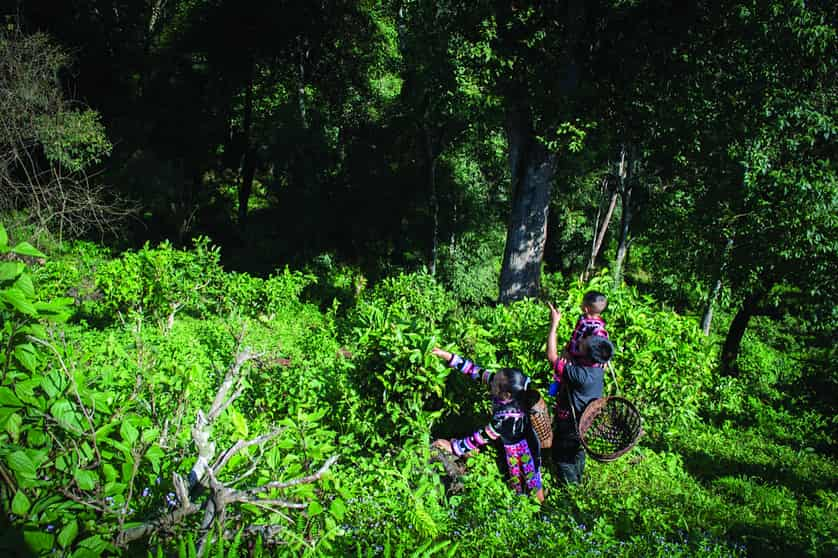
“I never intended to make the best tea in the world. The quality of tea depends on many factors, from what kind of plant it is, the environment in which it grows, how it is picked and processed. There are people in China who are 12th generational pickers, they have perfected the craft. My intention is to produce sustainable tea in the best way possible. Today our teas are highly appreciated by many, both tea specialists and people who normally don’t drink tea. I also wanted to create a brand that produced tea from the region of its origins, which I soon narrowed down to Thailand.”
And people are noticing. Monsoon Tea was launched in 2013, and opened its shop in Wat Gate this year, showcasing Rimdahl’s many flavour-infused teas – tom yum tea anyone? – as well as featuring Ake’s exceptional cooking of tea leaves. The menu includes a fresh or crispy tea leaf salad, pasta with tea leaf pesto, chicken breast with creamy tea sauce, pad Thai with crispy tea leaves and other scrumptious dishes, alongside a menu of teas, both hot, cold, pure and infused. Local businesses such as Ginger, Woo Café and Rachamankha Hotel feature his teas on their menus and soon the world came knocking.
“Prada recently bought the 1824 pastry shop, Pasticceria Marchesi on the world’s most expensive street in Milan, and they have ordered a few hundred kilograms of our teas,” grins Rimdahl proudly. They are opening many more branches next year in Italy, Dubai and Singapore, and we will be featured in all of them! I am also off to Casablanca next week to give a talk about our sustainable teas, so the word is spreading. I have also been in talks with Professor George van Driem, a Himalayan linguist, who is about to publish a seminal book on tea, ‘A Tale of Tea’ next year. He will be challenging many myths related to tea and will confirm my theory of tea as indigenous and originally consumed by the people of the Himalayan lowlands.”
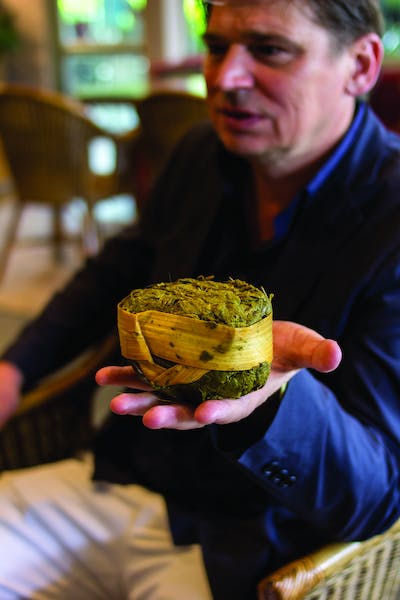
Tea is, according to van Driem, the second most consumed beverage in the world after water, with four million metric tonnes consumed annually. It also covers over 3.5 million hectares of the planet, making Rimdah’s sustainable tea a very attractive solution to growing demands for its consumption.
“Tea gave me my life and food and sustained my livelihood,” said Rimdahl. “It is also harming the planet. So I believe that if I can promote the consumption of sustainable tea, I will have contributed to our world. People talk about organic this and organic that, but my body can handle a trace or two of chemicals, but not a world without forests. So it would be great if tea planters can begin to look at these traditional northern Thai methods of cultivating tea, so that we can enjoy endless cups of tea while having a sustainable future.
